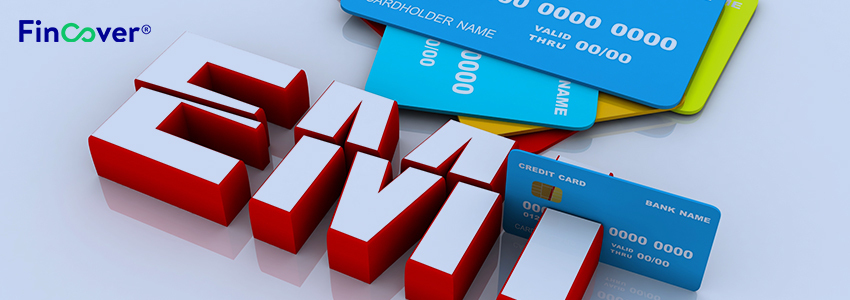Check how to convert and calculate the Credit Card EMI
How Credit Card EMI is calculated?
One of the enticing components associated with credit cards is the option to convert your purchases into Equated Monthly Instalments (EMI). The EMI facility in credit cards comes into play when the amount is very large that you are unable to pay off in a single payment. Many new users are unaware of credit card EMIs and how they work, to help them make understand these details, we will give you a detailed explanation about EMI conversion in credit cards.
What is Credit Card EMI Facility?
EMI facility offered by Credit cards allows you to divide your total credit card bill into smaller instalments that you can pay till your dues are settled. It becomes a great option for those who find it difficult to pay all the dues at once. You can choose the tenure of your convenience. Generally, the tenure is of 3, 6, 9, 12, 15, or 18 months.
Once you choose the EMI plan for your purchase, the amount gets locked. As you pay the EMIs, the amount will be unblocked accordingly. For example, if you make a purchase of Rs. 60000 and choose a 6 month EMI plans with a monthly instalment of Rs. 10000. Rs. 60000 will be initially blocked out of your credit limit. Now if you pay Rs. 10000 as First Month EMI, then Rs. 10000 will be unblocked. The process goes on till you pay the entire amount.
How is credit card EMI calculated?
If you have the experience of converting a purchase into EMI, then you would have noticed that you are actually repaying the amount slightly higher than the actual purchase. Several factors determine the way credit card EMIs are calculated.
Associated Fees and Charges
Not every credit cards offer zero cost EMIs, at most times, you have to pay some charges along with the original amount.
Interest rate – The banks will charge a interest rate for converting the EMIs, which means you will have to pay an interest component along with the principal. Some banks offer lower interests, while others have high-interest charges. However, this interest is generally lower than the regular interest of the credit card
EMI Processing Fee – When ever your transaction is converted for EMI, there will be a EMI processing fee that you need to pay. It will be levied only on the first month of your EMI tenure. This fees normally varies from bank to bank
Late fees – If you do not pay the EMI within the due date, then you might be charged a late payment fee. The late payment fee is fixed by the bank
Tenure – Normally, the tenure you choose for EMI is an important factor while calculating the EMI. If you choose a higher tenure, then you will have to pay a higher amount because of longer interest charges. If you are planning an EMI option, plan for a minimal tenure.
When can we go for Credit Card EMI option?
Just because there is an EMI option available with your credit card, you need not necessarily avail it. Avail it only when the purchase amount is unpayable at one go as not paying the full amount may impact your credit score. In this case, availing an EMI is a wise option. Many banks offer no-cost EMIs in Retail shops, e-commerce websites, etc, which comes with zero interest charge, which is much advantageous in terms of saving money on interests. However, they may charge a small processing fee which will be billed in the first EMI
Always do check the terms and conditions and fees and charges associated with the credit card issuer. If you have multiple credit cards, choose the one that offers the lowest interest rates.


